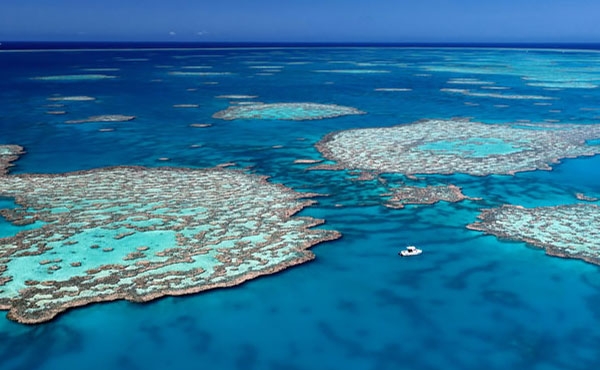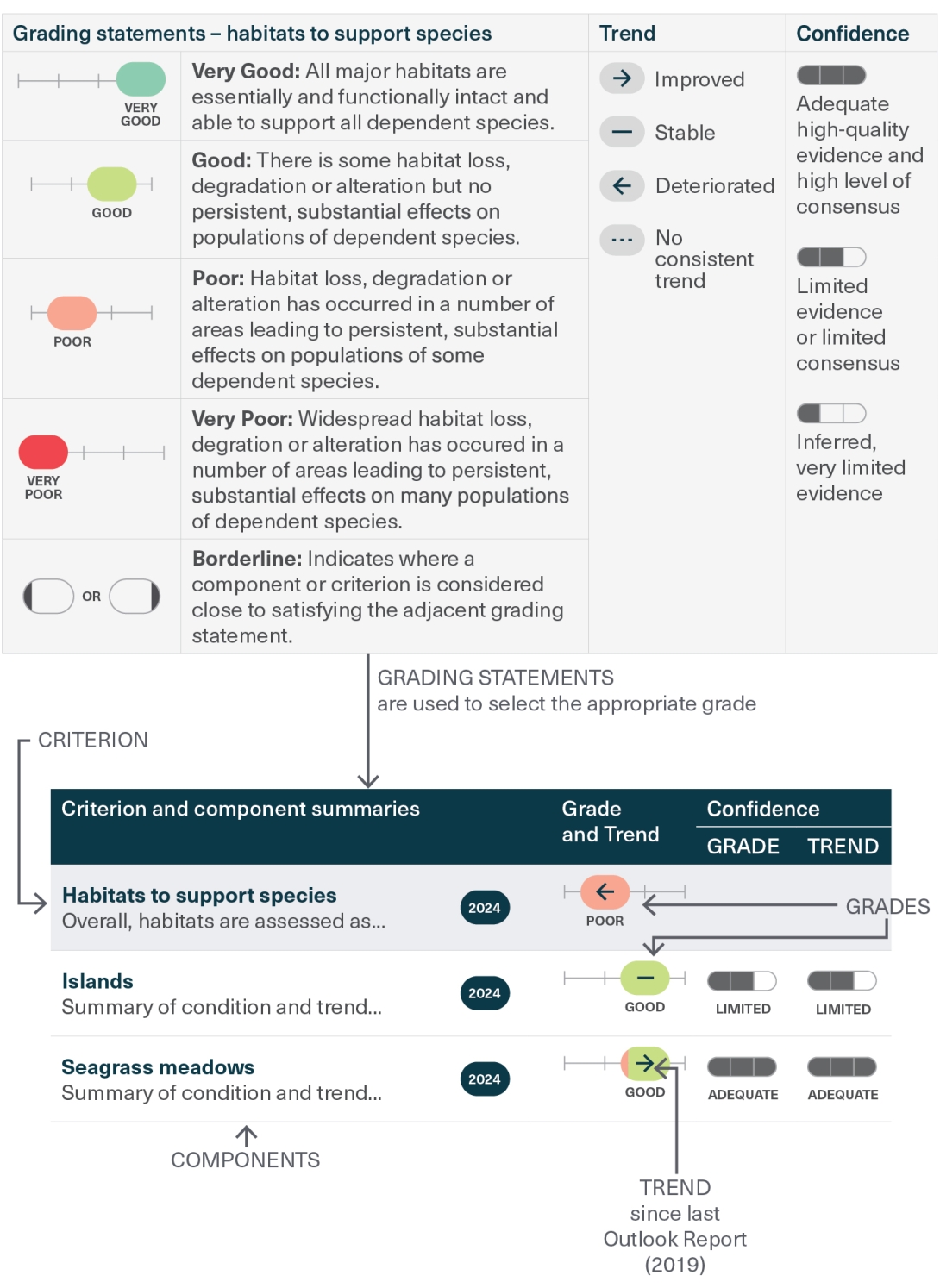A series of condition grading statements standardise the allocation of grades for each criterion and all components examined in an assessment. A four-point grading scale has been used since 2009 and is continued for consistency. An example is shown in Figure 1.6. There is no option for ‘moderate’, so a decision is required about whether a component is in a positive or negative state. This application is consistent with the Australian State of the Environment Report.10
The grade allocated is a ‘grade of best fit’, based on a qualitative assessment of the available evidence and scaled to the Region (or Catchment for coastal ecosystem and coastal development). It is not a comparison of the Region in relation to other tropical and sub-tropical ecosystems around the world. It is recognised that the condition grade of a component may not be consistent across the entire Region. Where important subregional differences in condition and trend are supported by evidence (for example, corals), they are identified in the discussion and graphics within the main text of the chapter and considered in the grade and trend.



